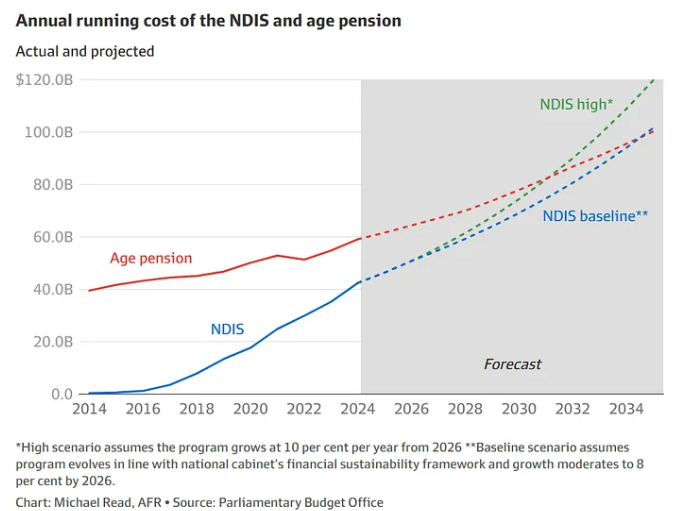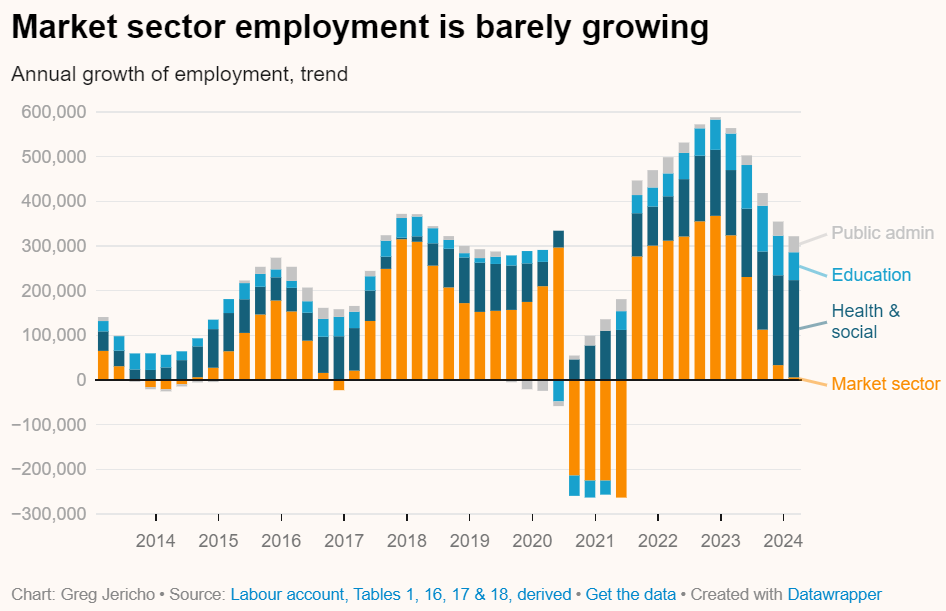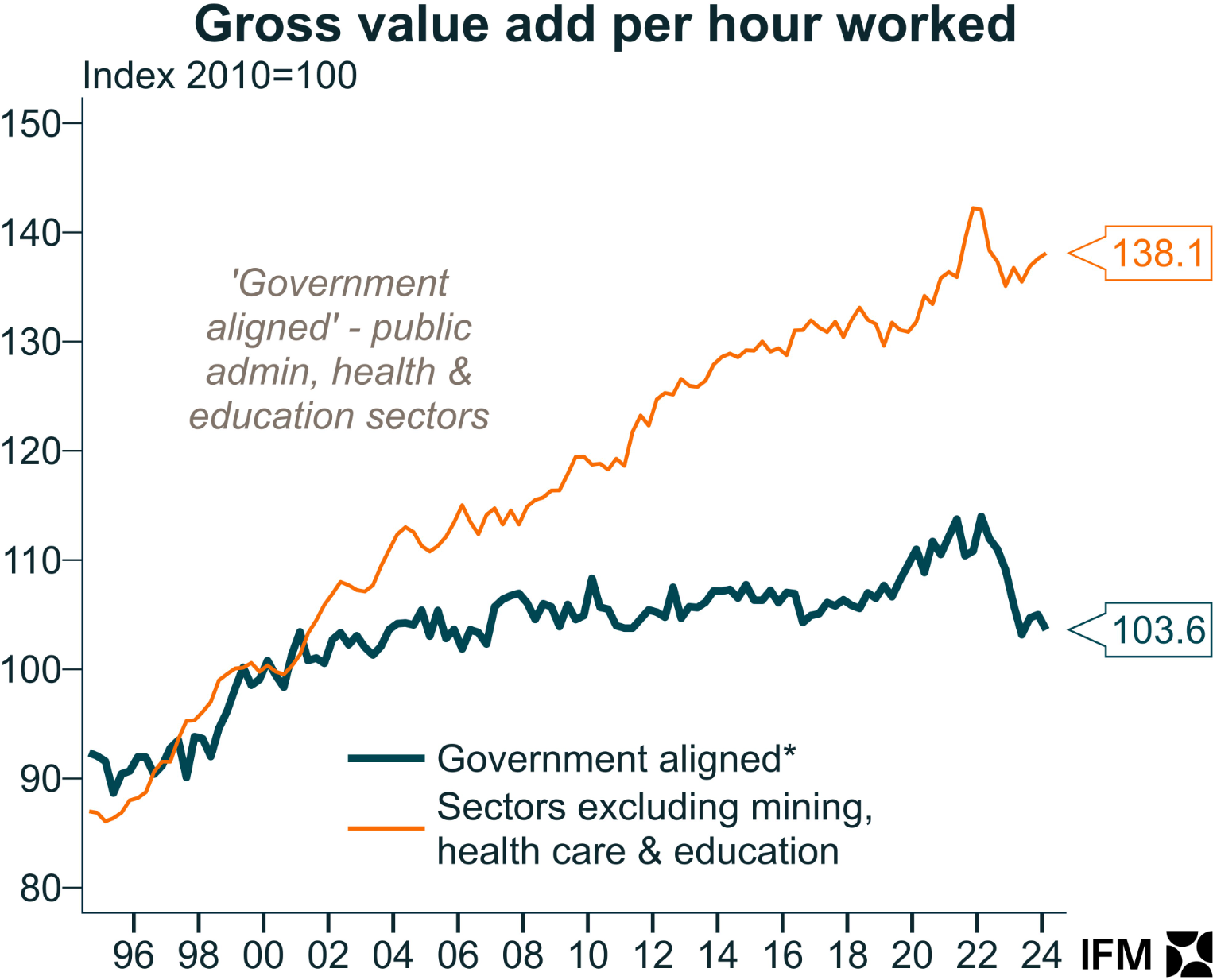Productivity Commission boss Danielle Wood noted it has always been hard to boost productivity in labour-intensive industries such as the aged and disability care sectors.
With the care sector certain to form a larger part of the economy, Wood says that productivity in other industries will have to improve to combat the negative impact on productivity that will result from growth in the care sector.
“So what that means is as those sectors expand as a share of the economy, as they inevitably will, that will drive down productivity overall, and you have got to work harder elsewhere”, she told The AFR.
“If we want to continue to remunerate people appropriately in these sectors, they tend to get more expensive over time. And then when you add ageing into that equation, that [trend] becomes even more acute”.
“[It is] certainly hard to look at the growth rates [of the NDIS] and not have some concerns around sustainability”, she said.
The NDIS currently costs $42 billion and is more expensive to operate per year than aged care ($36 billion), Medicare ($32 billion), federal hospital financing ($30 billion), and medicines ($20 billion).
The NDIS is also rising at a rate of roughly 20% per year and has become one of the federal government’s most significant budgetary pressures, along with paying interest on government debt.
The Parliamentary Budget Office projects that in around a decade, the NDIS will cost over $100 billion, – i.e., as much as the Aged Pension:

As shown by Greg Jericho this week, nearly all of Australia’s jobs growth over the past year has been related to the NDIS:

However, as noted by Danielle Wood above, government-aligned caring jobs typically experience poor productivity growth:

This is problematic for Australia given the NDIS is projected to comprise an increasingly large share of the Australian economy over coming decades.
Gary Banks, former the former head of the Productivity Commission, confessed in April that the body made a mistake in recommending the creation of the NDIS, admitting that he was overly optimistic about its economic benefits.
“In retrospect, the commission clearly underestimated the incentives for ‘overservicing’ that such a scheme presents and, in particular, was too optimistic about the prospects of an eventual payback to the economy”, he said.
The reality is that the NDIS was designed to fail.
Whenever the federal government has set up a privatised market with an enormous pot of money, it has seen widespread rorting, misuse, and waste.
We saw widespread rorting the private vocational education and training (VET) system, the pink batts scheme, and child care subsidies. Now the NDIS is being targeted by unscrupulous players.


